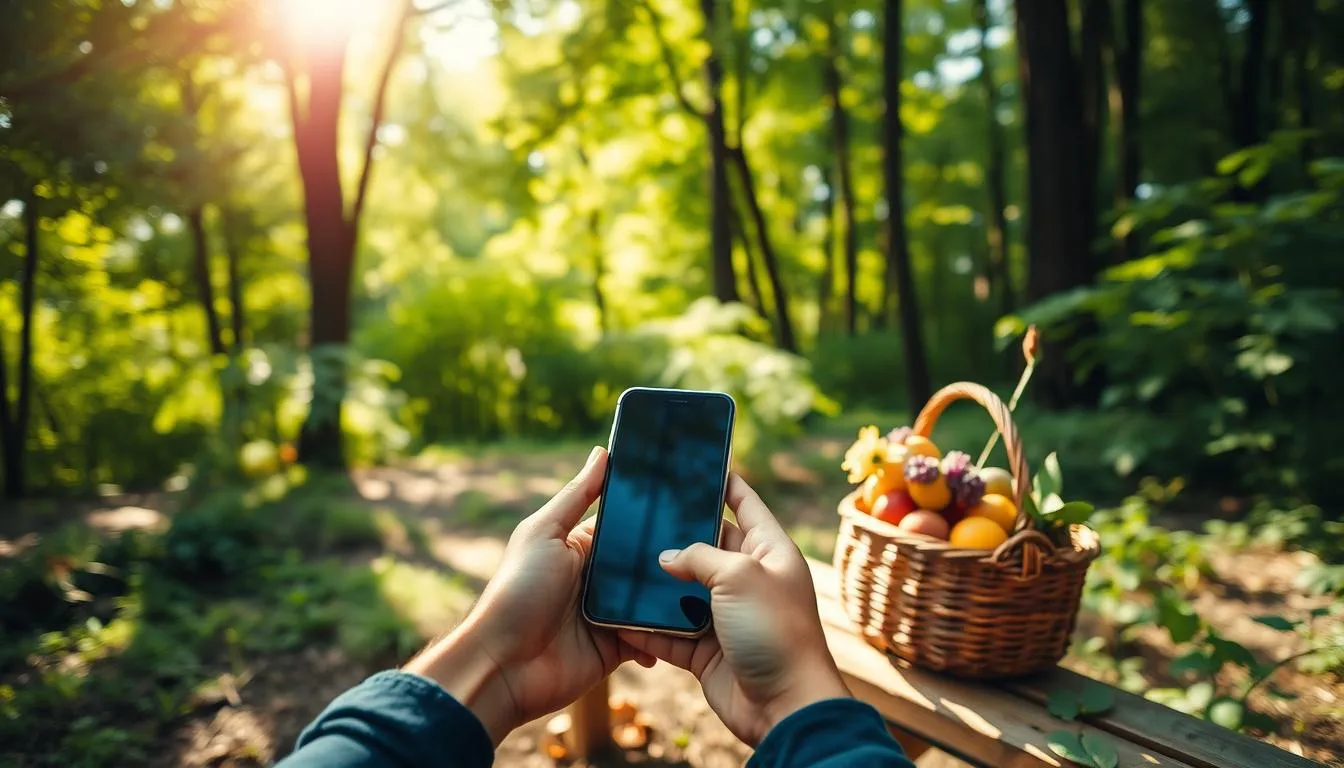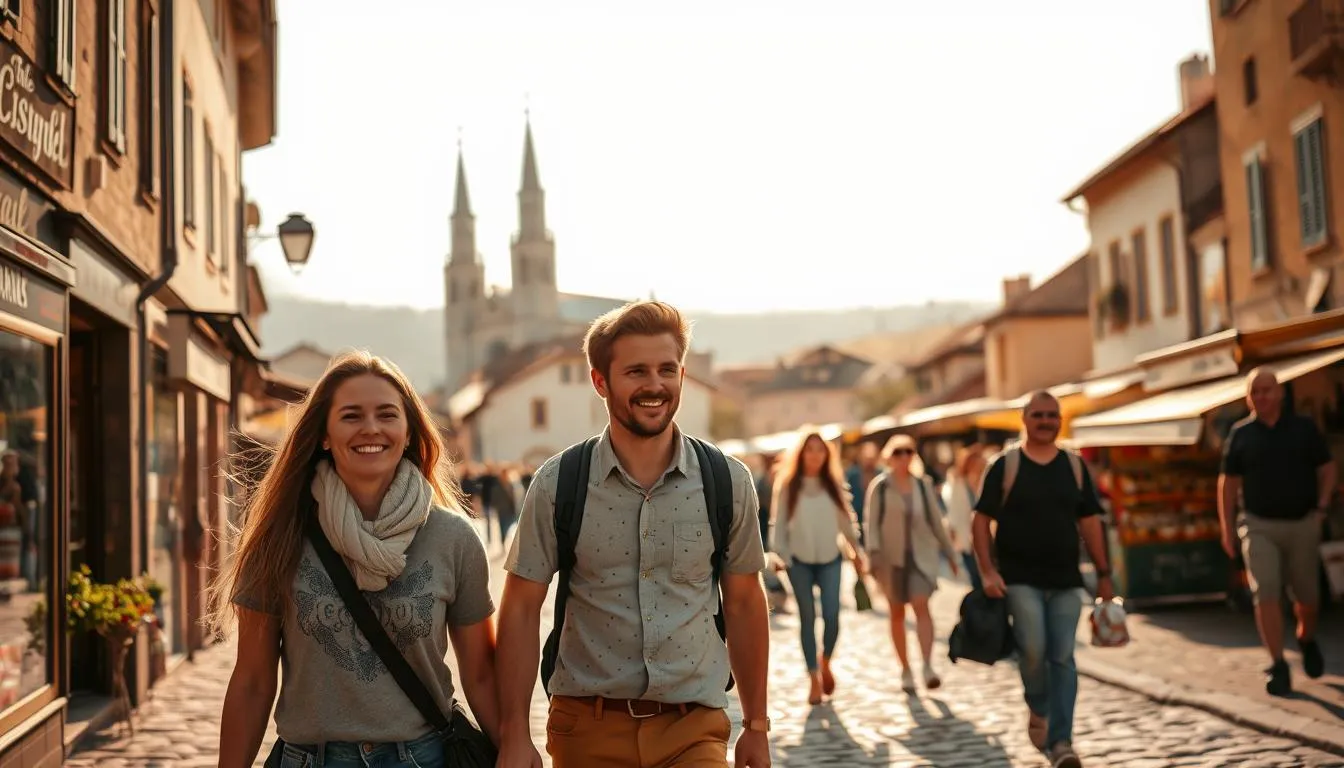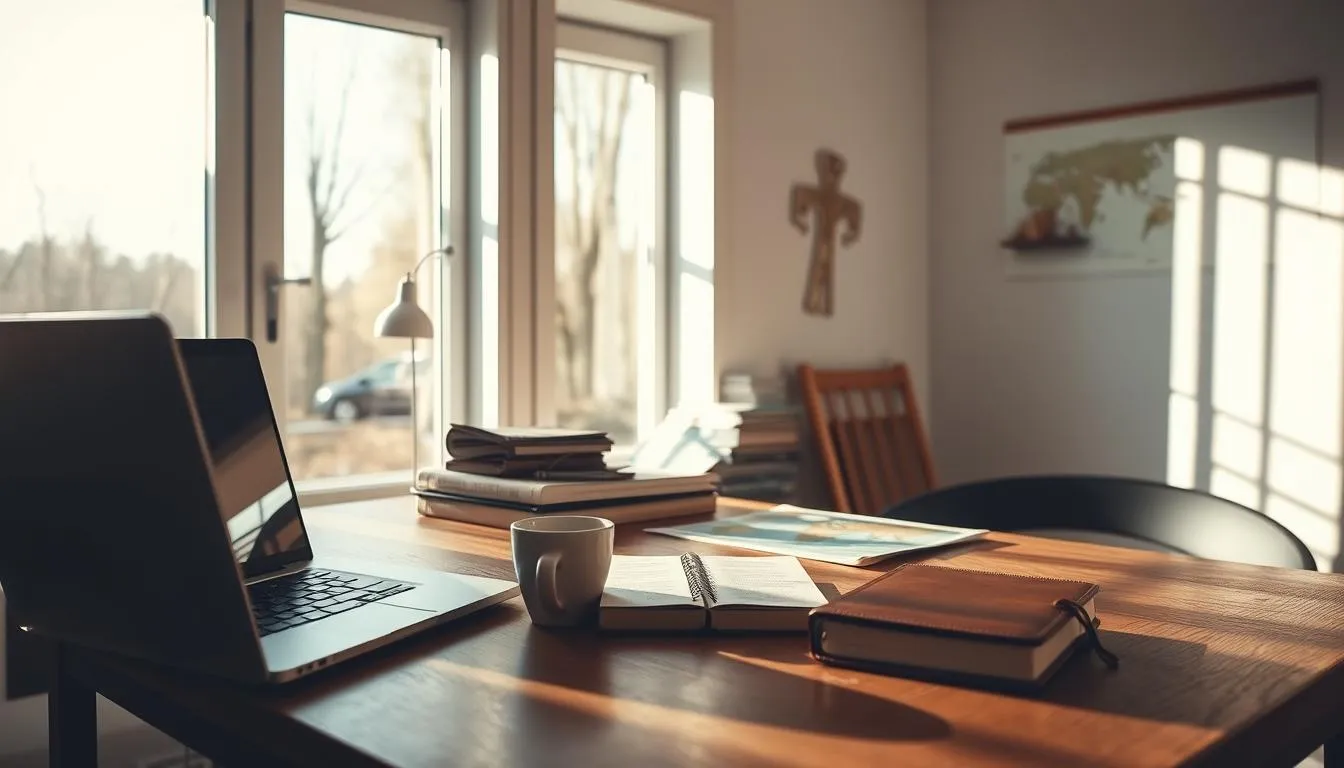Surprising fact: recent lifestyle studies show many people feel more refreshed after a single unhurried day than after a week crammed with activities.
This guide introduces a friendly, modern mindset that invites travelers to slow down and choose what matters. It frames the approach as the luxury of less: fewer checklists, more meaningful moments.
Think slow mornings with coffee instead of non-stop touring. Think visiting one artisan market rather than rushing through five museums. This way, rest becomes part of the vacation and life.
The shift from doing it all to doing what matters creates space to breathe, reflect, and reconnect with others and the world. You’ll learn mindset tips, simple planning steps, and real examples so you can apply this approach with confidence.
This is not anti-adventure. It’s a kinder, quieter way to build a journey so you return home recharged, not depleted. For more perspective, see a practical take on slow methods at mindful exploration techniques explained.
Key Takeaways
- Adopt a mindset that values quality of experiences over quantity.
- Plan fewer stops and include intentional breaks for rest.
- Choose presence over performance on social media and avoid fomo.
- Simple choices—slower mornings, lighter luggage—create richer memories.
- This approach blends quiet luxury with authentic engagement.
What JOMO travel really means in the age of social media and slow travel
When you stop chasing a checklist, you start collecting real, quiet memories.
From FOMO to presence:
From FOMO to JOMO: a mindset shift toward presence, rest, and joy
Define it simply: swap fomo and the fear missing urge for steady calm and contentment. Even when social media and other media push highlights, choose presence. This mindset makes rest a valid goal, not a consolation prize.
Practical shift: make fewer, better choices so each moment can land fully. Skip a jam-packed day for a slow coffee or one market visit. When you decide what matters, you stop aiming for a perfect photo to impress people you barely know.
Quality over quantity: choosing fewer experiences for deeper connection
Quality means lingering. One artisan market, one museum done well, or a long walk can give richer memories than rushing through many sites.
- Filter choices: will this add ease and presence? If no, let it go.
- Reframe missing as an empowered choice that buys time for what matters.
- Document less: capture a few thoughtful photo moments to stay connected to the place and people.
| Approach | Typical habits | What you gain |
|---|---|---|
| Checklist mode | Many stops, constant photos, media comparisons | Fast updates, shallow memories |
| Slow-choice mindset | Fewer plans, lingering, mindful photos | Deeper connection, less stress |
| Balanced approach | One anchor experience, flexible extras | Memorable moments with room to rest |
For a practical take on how this works in real life, see a practical perspective on making slower choices.
Why JOMO is trending now: burnout relief, digital detox, and post-pandemic priorities
The appetite for gentler, more intentional breaks has risen sharply in recent years. Many people are tired of packed schedules that mimic a busy workweek. That pattern raises stress and leaves travelers more tired than rested.

Less pressure, more presence: escaping stress and overtourism fatigue
Overcrowded sites, long lines, and inflated prices have turned parts of the world into draining zones. Choosing calm corners reduces noise and lets you experience places with intention.
Digital distraction to digital detox: unplugging for better sleep and lower stress
Screens and constant media pings fracture attention. A deliberate digital detox—even partial—can reduce anxiety and improve sleep. Resorts such as Six Senses La Sagesse offer unplugged meals and rooms that aim to clear the mind and improve sleep quality.
Post‑pandemic reset: slowness, simplicity, and authenticity as modern “luxury”
After years of doing more with less energy, people now value simplicity and real connection. Making rest the priority is not a retreat from life—it’s a practical way to return home restored and less swayed by fomo.
- Why it matters: rest first, activity optional.
- Quick win: try a short unplug to feel the benefit.
Who JOMO travel is for: travelers seeking a calmer pace and richer experiences
Many people drift toward calmer itineraries when they want meaning instead of momentum. This approach suits a wide range of people who prefer presence and real connection over packed schedules.
Busy professionals and wellness seekers
Busy professionals often choose a slower way to ensure their vacation truly restores them. They pick easy mornings, one anchor activity, and time to sleep and reflect.
Wellness-minded people favor nourishing routines—yoga, good food, and calm days—over constant outings and screen-driven noise.
Solo travelers, families, and retirees
Solo travelers value the freedom to shape days intuitively. Families use slower days to reconnect without devices calling the shots.
Retirees and empty nesters enjoy lingering in a neighborhood, meeting others, and skipping early-bus rushes.
“A gentler pace often leads to the most memorable conversations and friendships.”

| Audience | Typical choice | What they gain |
|---|---|---|
| Busy professionals | Long mornings, one planned outing | Real rest and restored energy |
| Wellness seekers | Mindful routines, fewer screens | Better sleep and calm |
| Families & solo travelers | Flexible days, shared meals | Stronger connections with others |
| Retirees / empty nesters | Savor neighborhoods, slow walks | Deeper local ties and leisure |
This way of planning flexes across years and life seasons. Anyone can adapt it in their own kind of way—no gatekeeping and no guilt about skipping the “musts.”
How to plan a JOMO-style trip: a practical, stress-free approach
A clear intention makes every choice on your trip feel calmer and more meaningful. Start by naming whether you want rest, inspiration, connection, or simplicity so decisions match how you want to feel.

Set an intention
Write a short goal for the trip and keep it visible while you pack and book. Let that aim guide where you spend time and which experiences you say yes to.
Choose one anchor experience
Pick a single memorable experience—a cooking class, short hike, or concert—and treat it as the day’s main event. Keep other plans light so curiosity can lead you.
Embrace a slow approach
Stay longer in one neighborhood, walk more, and meet locals. This approach trades frantic sightseeing for deeper moments and fewer transit hassles.
Disconnect to reconnect
Protect a device‑free day or a few quiet hours. Schedule one main plan per day, build generous buffers for transit and meals, and keep your options flexible.
- Quick checklist: intention, anchor, slow rhythms, device boundaries, and grace for change—use these on future vacations to shape a calmer journey.
Inspiration for your JOMO getaway: retreats, sleep tourism, and slow destinations
A quiet itinerary can turn ordinary days into gentle, memorable rituals. Pick one kind of pace and let the rest fit around it.
Wellness retreats with limited Wi‑Fi: Costa Rica calm
Choose a wellness retreat in Costa Rica where yoga and guided meditation anchor each morning. Limited Wi‑Fi helps guests stay present and resist the urge to capture every photo.
Slow Europe stays: one small town, repeated cafés
Settle into a single Italian town for several days. Return to the same café, notice rhythms of the destination, and meet local people for richer experiences.
Spa and sleep tourism: circadian syncing and sound bowls
Look for spa programs that focus on sleep. JW Marriott Marco Island offers circadian syncing, sound bowl meditation, and full‑moon beach yoga to help guests improve sleep.
Digital detox programs: unplugged rooms and reset options
Consider Six Senses La Sagesse for a digital detox program with unplugged rooms, device‑free meals, and curated experiences that lower stress and boost clarity.
U.S. escapes and luxury spa days
For shorter vacations, pick a U.S. spa with simple rituals: Hotel Maverick’s canyon bathing, Omni Grove Park Inn’s mineral pools, or The Ritz‑Carlton, Bachelor Gulch’s Spa All Day package. Each offers rest, hammocks, tea lounges, and saunas to slow your pace.
Choose the option that matches your trip goal—retreat, detox program, or extra balcony view time—and let unplanned moments become the highlight of your getaway.
Conclusion
Small, intentional pauses rewrite a getaway into something restful and real.
Doing less with intent often gives more—energy, clarity, and calm that last after your vacation. Encourage travelers to trade the fear missing habit for choices that honor your time and what you truly want from the world.
Remember: one well‑chosen retreat, a quiet city wander, or a mindful pause at a beautiful destination can build the connections you’ll recall for years. Take one meaningful photo, then put the phone away so you can fully see people and place.
For your next trip, try one small change—fewer plans, longer stays, or a simple digital boundary—and notice how it shifts the whole experience. Choose presence over pressure and let the world unfold at your pace.
FAQ
What does the concept of slow, presence-focused travel mean in today’s social media world?
It’s a mindset shift from rushing to photograph every moment to savoring fewer, deeper experiences. Instead of chasing checklist attractions, prioritize rest, real conversations, and local routines. That reduces stress, improves sleep, and helps you return home refreshed and grounded.
How can I move from fear of missing out to enjoying the moment during a getaway?
Start by setting a clear intention—rest, connection, or inspiration—and allow some days to be unplanned. Choose one anchor activity each day and treat other options as optional. Put your phone on airplane mode for parts of the day to break the habit of constant comparison.
Who benefits most from a slower pace and fewer planned activities?
Busy professionals, wellness seekers, solo travelers, families, and retirees all gain from slowing down. People facing burnout or digital overload tend to notice the biggest improvements in mood and sleep quality when they adopt this approach.
What practical steps help plan a calm, stress-free trip?
Book a longer stay in one place, pick an anchor experience, and allow extra downtime. Choose lodgings with quiet common areas or a spa, schedule a digital detox window, and map nearby cafés and parks for unhurried afternoons.
How does unplugging improve the quality of a vacation?
Reducing screen time lowers cortisol, helps circadian rhythms, and promotes deeper sleep. Without constant scrolling, you notice small joys—a sunrise view, a local conversation, or a slow meal—which build lasting memories rather than short-lived social posts.
Are there specific retreats or programs that support a slower approach?
Yes. Wellness retreats, digital detox programs, and sleep-focused stays often limit Wi‑Fi, teach mindfulness practices, and offer circadian-based routines. Look for offerings in Costa Rica, blue‑zone regions, or U.S. wellness destinations that emphasize rest and simplicity.
Can a slow-paced getaway still feel luxurious?
Absolutely. Luxury can mean space to breathe, personalized service, quality sleep, and thoughtful amenities like saunas, hammocks, and tea lounges. True luxury is often the freedom to do less and savor more.
How do I balance being present with wanting to capture memories?
Limit photo-taking to short windows—an hour in the morning or evening—and use a single device. Focus on capturing the essence rather than every detail. The majority of the time, choose full presence; you’ll remember the trip more vividly and stress less.
What are simple local habits to adopt when staying in one place longer?
Visit the same café, shop at a neighborhood market, walk the same route at different times of day, and learn a few phrases in the local language. Repeating small rituals builds connection and makes a place feel like a temporary home.
How long should I stay to experience meaningful rest and connection?
Stays of a week or longer often allow real decompression, but even a long weekend with intentional downtime can reset habits. Prioritize longer blocks in the same destination whenever possible to sync with local rhythms.
What can families do to slow down and enjoy richer moments together?
Plan fewer sites, schedule unstructured playtime, and pick accommodations with communal spaces. Encourage shared rituals—morning walks, evening storytelling, or a tech-free family meal—to strengthen bonds and reduce constant planning stress.
How does this approach help with overtourism and responsible visiting?
Choosing fewer experiences and spending more time in one place spreads economic benefits to local businesses and reduces peak-day crowds. Slow stays encourage respectful engagement with culture and environment, which supports sustainable travel practices.
